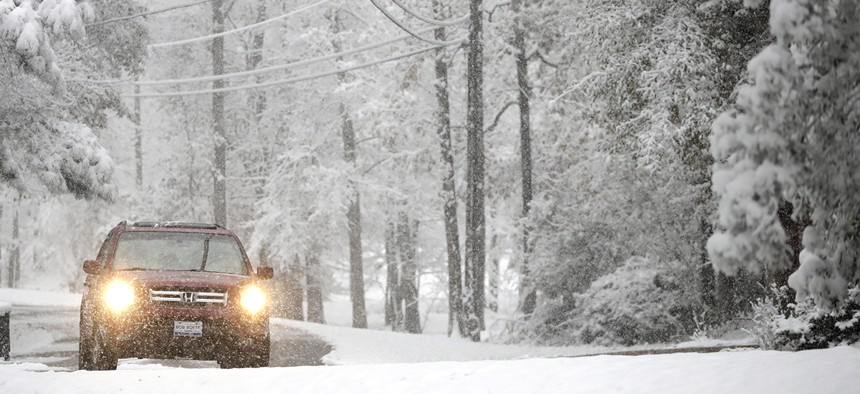Your Self-Driving Car of the Future Is Going to Need A Lot of Sensors to Handle the Snow

A vehicle drives along Lakeway Drive as snow covers the area following an early morning snowstorm, Friday, Dec. 8, 2017, in Brandon, Miss. Julio Cortez/AP
It's difficult for cars to even gain experience with wintery conditions.
Driving under adverse weather conditions has long been one of the toughest challenges for self-driving cars. Not only is it difficult for cars to accumulate experience with those conditions—Bay Area-based Waymo has to send its cars all the way to Michigan just to test drive them in the snow—it is also challenging for cars to “see” their surrounding through precipitation. Rain can make the car’s sensors untrustworthy and snow can cover up the lane markings that cars rely on to navigate.
A group of researchers at the VTT Technical Research Centre of Finland say they have specifically designed a car for demanding weather conditions. On Friday, they announced that the car, named Martti, had successfully completed an autonomous drive through a snow-covered public road, and at a good pace, hitting 40 km per hour (25 mph). They claim it is the first fully autonomous car to do so.
Martti’s test drive was carried out in Muonio, northwestern Finland, on an intelligent road built by the Finnish Transport Agency to be compatible with intelligent transportation systems. The road has 5G connectivity and embedded sensors that relay road conditions, like friction data, and precise positioning to autonomous cars. But according to project manager Matti Kutila, Martti didn’t rely much on the road’s “intelligence,” because it isn’t equipped to communicate with the digital infrastructure.
Moving forward, VTT researchers plan to increase Martti’s precision by upping its radar’s resolution, and by adding communication capabilities to take advantage of the intelligent road.


